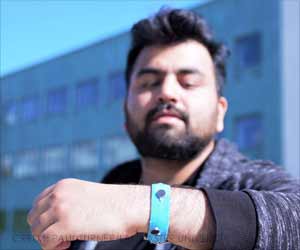Researches at John Hopkins University have discovered a method to overcome a hurdle in developing insulin cell transplants for Type 1 diabetes patients.
Researches at John Hopkins University have discovered a method to overcome a hurdle in developing insulin cell transplants for Type 1 diabetes patients.
In the traditional transplant, cells combined with necessary immune-suppressing drug have given inconsistent results and researchers say that it is due to difficulty in tracking pancreatic beta cells inside the body.In the new method, insulin-producing cells in magnetic capsules are encapsulated, with an FDA-approved iron compound and an off-label use, which can be tracked by magnetic resonance imaging (MRI). The product, that has been tested in swine and diabetic mice, is also not rejected by the immune system.
"We're really excited because we can track where we put the cells and make sure their protective housing stays intact and that the cells don't move. This could solve the mystery of why current transplantation techniques work only for so long," Nature Medicine quoted one of the study's authors, Aravind Arepally, M.D., assistant professor of radiology and surgery at Hopkins.
"Type I diabetes-the most common childhood sort-causes a person's immune system to destroy the pancreatic beta cells that make insulin. Without insulin, blood sugar levels can become dangerously high and lead to complications that include blindness or kidney failure. Careful monitoring of blood sugar levels paired with insulin injections can manage the condition, but transplanting healthy beta cells holds more promise for the moment-to-moment fine-tuning of insulin levels," said Arepally.
According to co-author Jeff Bulte, Ph.D., a professor of radiology and chemical and bio-molecular engineering at Hopkins, the unprotected transplanted cells are susceptible to attack by the immune system, and researchers are unable to understand why the cells don't produce insulin inside the body.
To counter these hurdles, the research team confined beta cells in tiny permeable capsules made from a combination of alginate, a viscous material prepared from seaweed, and Feridex, a magnetic iron-containing substance visible under MRI.
Advertisement
After encapsulation, the cells harden; creating a "magnetocapsule" that measures less than 1/128 of an inch across.
Advertisement
The magnetocapsules were fitted into the abdomens of mice engineered to develop diabetes and it was found that blood sugar levels became normal in a week asndf it remained the same for two months.
The magnetocapsules were also implanted into the livers of swine with the help of MRI fluoroscopy, special reflective screens and a computer monitor that provide real-time imaging. The liver was chosen, rather than the usual pancreatic home of beta cells, because it contains many blood vessels that can deliver insulin quickly to the rest of the body.
"Getting the magnetocapsules into the right place requires hand-eye coordination normally required when playing video games," said Arepally .
Tests in pigs after three weeks revealed that that the magnetocapsules remained intact in the liver, and blood tests showed that cells were still secreting insulin at levels considered to be functional in humans.
"We hope that our magnetocapsules will make tissue-type matching and immunosuppressive drugs problems of the past when it comes to cell-based therapies for type 1 diabetes," said Bulte.
Source-ANI
LIN/B





